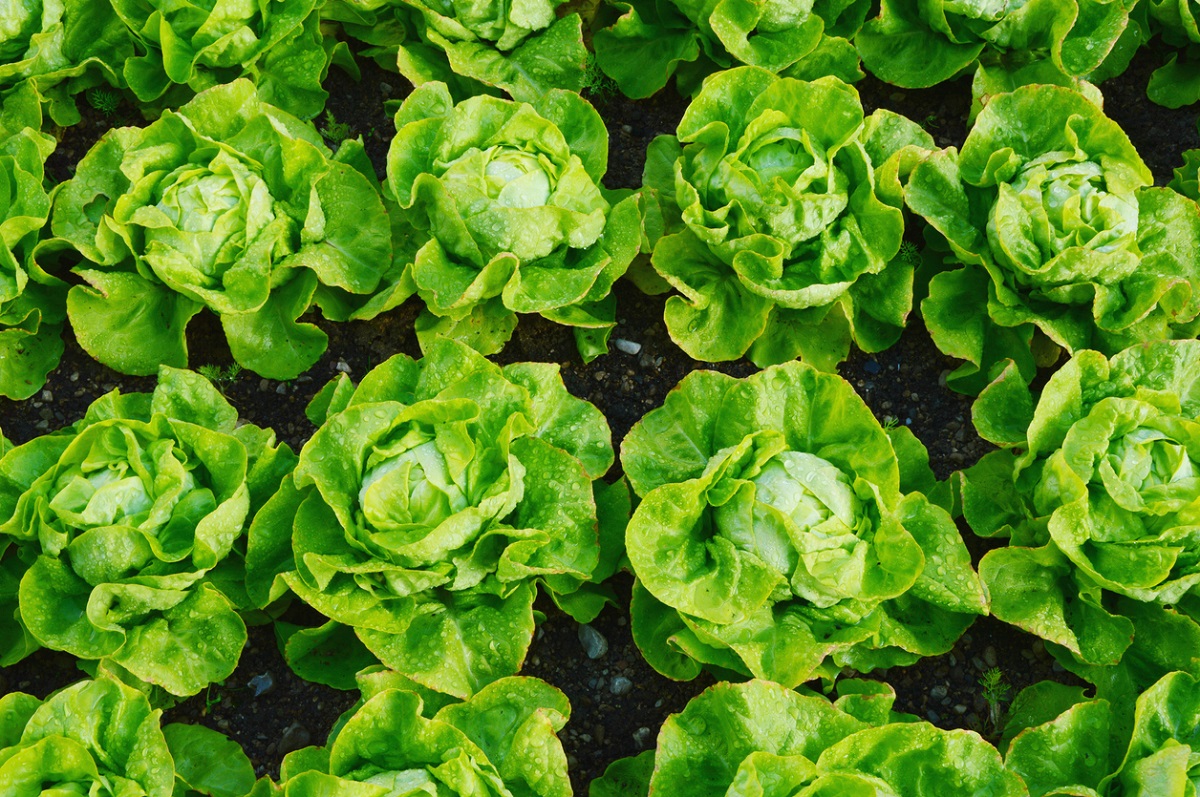
UPenn Develops Lettuce That Stimulates Bone Building Cells
March 18, 2020| |
A team of scientists from the University of Pennsylvania's School of Dental Medicine developed lettuce plants that could stimulate the growth of bone-building cells and promote bone regeneration by using an animal protein to synthesize an orally delivered shelf-stable medication grown in the lettuce. This can address the medication needs of bone-fracture and diabetic patients who can have the option of eating their medicine rather than use injectables.
The scientists inserted the DNA of a protein called the Insulin-like Growth Factor 1 or IGF-1 into the lettuce genome. IGF-1 is an animal protein that can pass through the stomach and be absorbed in the gut. The protein is known to signal the increase in the number and longevity of the cells responsible for bone growth promoting fracture healing, and dental tissue regeneration. This is particularly important for older adults who are at risk for fracture, and also for diabetics who have low IGF-1 levels. Diabetic patients are prone to bone fractures more than the general public and are known to heal slower. Though there are existing treatments to address this, patients often skip them because they are expensive and require a repetitive process of injections.
The developed lettuce was grown in the laboratory and later on was put to the test by feeding it to diabetic mice with broken bones. Results showed that the mice had an increase of IGF-1 levels in their bloodstream and it stayed that way for a few hours. Further testing showed that the mice had a significant increase in bone volume and density at their fracture sites. The scientists also found that the lettuce leaves can be freeze-dried and ground into powder form and is shelf-stable for nearly three years.
This new development can become an option for diabetic patients with bone fractures. Instead of seeking treatment using repetitive injectables with a short shelf-life span that need to be refrigerated, it is possible to produce a plant-based solution, in this case, the lettuce, that can be eaten, stored and transported at room temperature, and can be grown, thus qualifying as a renewable resource of the medication.
The scientists published the results of their study in Biomaterials.
| |
You might also like:
- Lettuce Genome Assembly Published
- Non-Browning GreenVenus™ Romaine Lettuce Advances to Commercial Trials in the US
- RNAi-Mediated Resistance of Transgenic Lettuce to Whiteflies
Biotech Updates is a weekly newsletter of ISAAA, a not-for-profit organization. It is distributed for free to over 22,000 subscribers worldwide to inform them about the key developments in biosciences, especially in biotechnology. Your support will help us in our mission to feed the world with knowledge. You can help by donating as little as $10.
-
See more articles:
-
News from Around the World
- Multiple Approaches Necessary to Achieve Global Targets to Combat Poverty and Hunger
- Ugandan President Ready to Sign GMO Bill into Law
- Study Documents Ghana's Public Perception Towards GM Food, Labeling
- Canada Celebrates 25 Years of GM Approvals
- UPenn Develops Lettuce That Stimulates Bone Building Cells
- First Comprehensive Map of the Arabidopsis Proteome Now Available
- European Consumers Exposed to Consistent Fear-Mongering from Anti-Biotech Groups for Two Decades
-
Research Highlights
- Drought Tolerant Potato Developed thru Overexpression of GhABF2
-
Plant
- CRISPR-Cas9 Used to Develop Marker-free Carotenoid-enriched Rice
-
Health
- Viable Vaccine Candidate for COVID-19 Developed Using Proprietary Plant-based Technology
-
Read the latest: - Biotech Updates (December 10, 2025)
- Gene Editing Supplement (November 26, 2025)
- Gene Drive Supplement (February 22, 2023)
-
Subscribe to BU: - Share
- Tweet

